- Home
- Jim Eldridge
Alan Turing Page 5
Alan Turing Read online
Page 5
However, in the early 1950s, there was an increasing clampdown on homosexual acts. Homosexuality was now seen as a danger to society. Undercover police officers acting as agents provocateurs would pretend to be gay and arrest the men they entrapped, and the police pursued cases much more actively.
In the case of Alan’s relationship with Murray, the police put Harry’s accusations about their sexual relationship to both men. If Alan and Murray had lied and denied it, that might have been the end of the matter. However, when the police asked Alan about his relationship with Murray, Alan admitted that it was sexual. Both men were charged with gross indecency.
At Alan’s trial, where he pleaded guilty, his barrister asked that Alan be spared a prison sentence, telling the judge: ‘The public would lose the benefit of the research work he is doing [if he were sent to prison]. I ask you to think that the public interest would not be well served if this man is taken away from the important work he is doing.’ The barrister added: ‘There is a treatment which could be given to him.’
This ‘treatment’ was a course of ‘chemical castration’. This was based on the theory that regular injections of oestrogen (the female sex hormone) would reduce Turing’s sex drive and make him lose interest in sex with men.
The judge agreed that Alan could be put on probation instead of going to prison, provided he agreed to submit to this chemical castration. Alan agreed to this course of action. However, because he was found guilty and convicted of a homosexual offence, his official security clearance was cancelled. (Because being gay was a crime, homosexuals were considered vulnerable to blackmail by enemy agents.) For Alan, it meant that he could no longer be consulted on any top secret code-cracking issues.
There are conflicting views from people who knew Alan at this time about how he was affected by what happened. There were those who feel that it had little emotional impact on him at all, that he accepted the course of injections and was almost dismissive of it. Certainly, as there had been no restrictions on his travelling out of the country during his period of probation, Alan took trips abroad to France and Greece through the summer of 1953, and by all accounts enjoyed these trips.
However, others felt that the ban on him working for the Government on any sort of top secret research, whether code-breaking or advanced development in the area of computers, hit Alan hard. Such research and investigation had been his life, his enjoyment, and to find that world barred to him would have been particularly painful.
There was another, physical issue, that upset him. As a result of the course of injections of oestrogen, Alan developed larger breasts. He also put on weight. For someone who had always been a keen, fit and lean athlete, this was depressing.
16
Death
By the end of 1953, Alan had completed his term of probation, and his course of chemical treatments. Although he could no longer be employed on top secret Government work, the Science Department at Manchester University extended his contract for at least another five years.
He was also still intrigued by the potential for artificial intelligence and keen to do more work on that. He also wanted to extend the work he’d done on his Sunflowers Project, and extend it into the field of molecular biology.
In 1954 he also began writing fiction. His first story was obviously based on his own experiences and his relationship with Murray. The hero is Alec, a scholarly man who falls into a relationship with a young man called Ron: ‘Ron had been out of work for two months and he’d got no cash.’
This story was never finished. On 8 June 1954, Alan’s housekeeper, Mrs Clayton, found him dead in his bed. On the bedside table was an apple which had several bites taken out of it. The apple was found to contain traces of cyanide.
The inquest into Alan’s death was held just two days later, on 10 June. The coroner’s verdict was that Alan Turing had committed suicide by means of an apple poisoned with cyanide.
What led the coroner to reach this verdict? Certainly, the turmoil of events in his recent life could have pointed to that conclusion: his arrest and trial for gross indecency, the chemical castration he endured, his time on probation, being barred from the kind of Government research work he loved: all of these could have led to him being depressed.
Many people close to Alan disagreed with this verdict. His mother insisted that he would never have taken his own life. There was evidence from those who saw him in the last few days of his life that he showed no signs of depression, or wanting to kill himself. Alan’s neighbour, Mrs Webb, said, ‘Alan invited me and my husband to dinner on June 1st, and we spent a delightful evening with him. I saw him several times during the next two days and he was very jolly. Alan was full of plans for coming to visit us on his way home from the University in the afternoons.’
Alan’s housekeeper, who saw him regularly at this time, also said that she couldn’t believe that Alan had deliberately killed himself. The view of many of those close to him was that Alan had got his life under control. Since finishing his course of oestrogen injections, he had lost weight and got himself fit again. He was enjoying writing. He was engaged on work that he liked at Manchester University. Why would he want to kill himself?
But if Alan did not kill himself, how had he died? And why had the apple on his bedside table been contaminated with cyanide?
Alan’s mother, Ethel Turing, was sure that his death had been a tragic accident. Alan had always liked carrying out chemistry experiments, and he had a stock of chemicals at his house, including cyanide. It was also known that Alan liked to eat an apple before going to bed at night. In his mother’s view, Alan had got some cyanide on his fingers while carrying out an experiment, and the cyanide had got onto the apple. She was supported in this view by a psychoanalyst called Dr Greenbaum, who Alan had contacted to discuss his homosexuality. A letter from Dr Greenbaum to Ethel Turing said: ‘There is not the slightest doubt to me that Alan died by an accident. You describe Alan’s fashion of experimenting [with chemicals] so vividly that I can see him pottering about. He was like a child while experimenting, always testing things with his fingers.’
Another theory has been put forward. In the early 1950s, after the defection of two British spies to Soviet Russia, it was suspected that there was a spy ring made up of former Cambridge students, centred on those who had been at Trinity and King’s Colleges during the 1930s. Alan went to King’s, and joined the communist-sympathising Anti-War Council there. He had knowledge of top secret information at the highest level. Some people have therefore speculated that he was killed by the security forces in case he defected, and his death staged to look like suicide.
So: suicide, accident, or even murder? The debate still rages.
17
Alan’s Legacy
One thing is certain: although Alan Turing is considered by many to be ‘the father of the modern computer’, his enduring fame will always be as The Genius at Bletchley Park Who Broke The Enigma Code.
The work Turing and the Bletchley Park code-breakers did in cracking the Enigma code is thought by experts to have shortened the war in Europe by as many as two to four years.
Captain Jerry Roberts of the Royal Navy went further: ‘In 1940 the German U-boats were sinking our food ships and our ships bringing in armaments, left, right and centre, and there was nothing to stop this until Turing managed to break the naval Enigma as used by the U-boats. We then knew where the U-boats were positioned in the Atlantic and our convoys could avoid them. If that hadn’t happened, it is entirely possible, even probable, that Britain would have been starved and would have lost the war.’
Many people agree that without Turing’s work on breaking the German codes, Nazi Germany might have won the Second World War.
On 10 September 2009, in response to a petition asking the British Government to posthumously apologise to Alan Turing for prosecuting him for being gay, the British Prime Minister Gordon Brown issued the following official statement about Alan’s trial and sentence.
&nbs
p; It is no exaggeration to say that without Alan Turing’s outstanding contribution, the history of World War II could well have been very different. The debt of gratitude he is owed makes it all the more horrifying, therefore, that he was treated so inhumanely. In 1952 he was convicted of ‘gross indecency’ – in effect, tried for being gay. His sentence – and he was faced with the miserable choice of this or prison – was chemical castration by a series of injections of female hormones. He took his own life two years later.
Thousands of people have come together to demand justice for Alan Turing and recognition of the appalling way he was treated. While Turing was dealt with under the law of the time and we can’t put the clock back, his treatment was of course utterly unfair and I am pleased to have the chance to say how deeply sorry I and we all are for what happened to him. Alan, and many thousands of other gay men who were convicted as he was under homophobic laws, were treated terribly. Over the years, millions more lived in fear of conviction.
It is thanks to men and women who were totally committed to fighting Fascism, people like Alan Turing, that the horrors of the Holocaust and of total war are part of Europe’s history and not Europe’s present.
So, on behalf of the British Government, and all those who live freely thanks to Alan’s work, I am proud to say: We’re sorry, you deserved so much better.
It is fascinating to conjecture what Alan Turing might have achieved, what new breakthroughs and developments in computer sciences he might have made, if he had not died at the relatively young age of 41.
He pioneered and developed the Thinking Machine, machines that spoke and understood human speech; he developed Artificial Intelligence; he pushed the boundaries of computer science every step of the way, always searching for the next step. Where next? The hybrid human-organic-computer? A machine that designs and replicates itself?
In fact, both of these proposals are being developed and refined, as are many other developments in technology; and many in the scientific community consider that these advances have been made possible because of the groundbreaking work of Alan Turing.
Such has been Alan Turing’s impact on the world of science and mathematics, that his memory and work has been celebrated with many honours in his name, and buildings named after him.
• In the early 1960s, Stanford University in America named the lecture room at the Polya Hall Mathematics building ‘Alan Turing Auditorium’.
• Since 1966, the Association for Computing Machinery has given an annual Turing Award for technical or theoretical contributions to the computing community. It is generally acknowledged as the computing community’s highest honour.
• In 1994, a stretch of the A6010 road, the Manchester city intermediate ring road, was named Alan Turing Way.
• In 1999, Time magazine named Alan as one of the Most Important People of the 20th Century.
• In June 2001 a statue of Alan Turing was unveiled in Sackville Park in Manchester. The statue shows Alan sitting on a bench made of cast bronze. He is holding an apple. The text on the bench reads: ‘Alan Mathison Turing. 1912–1954.’ There then follows the motto: ‘Founder of Computer Science’, but in the form it would appear in if it had been encoded by an Enigma machine: IEKYF RQMSI ADXUO KVKZC GUBJ.
• The University of Texas at Austin has an honours computer science programme named the Turing Scholars.
• Istanbul Bilgi University in Turkey organises an Annual Conference on the theory of computation called Turing Days.
• One of the two amphitheatres of the Computer Science Department at the University of Lille in France is named in honour of Alan Turing.
• The University of Oregon, USA, has a bust of Alan Turing on the side of their computer science building, the Deschutes Hall.
• The Ecole Polytechnique Federale de Lausanne in Switzerland has a road and a square named after Alan (Chemin de Alan Turing and Place de Alan Turing).
• The University of Surrey has a statue of Alan Turing on their main piazza.
• At Edinburgh’s School of Informatics there is a Turing Room, with a bust of Alan.
• There are Departments of Computer Sciences named after Turing at many universities, including Chile, Puerto Rico, Bogota, Turin, Keele University, Bangor, Ghent, Lille in France, Oregon (USA), Aarhus (Denmark), and, of course, Cambridge, England.
The legacy of Alan Turing lives on.
This electronic edition published in November 2013 by Bloomsbury Publishing
Copyright © 2013 A & C Black
Text copyright © 2013 Jim Eldridge
First published 2013 by A & C Black
Bloomsbury Publishing Plc
50 Bedford Square,
London, WC1B 3DP
www.bloomsbury.com
The right of Jim Eldridge to be identified as the author of this work has been asserted by him in accordance with the Copyrights, Designs and Patents Act 1988.
All rights reserved
You may not copy, distribute, transmit, reproduce or otherwise make available this publication (or any part of it) in any form, or by any means (including without limitation electronic, digital, optical, mechanical, photocopying, printing, recording or otherwise), without the prior written permission of the publisher. Any person who does any unauthorised act in relation to this publication may be liable to criminal prosecution and civil claims for damages.
eISBN: 978-1-4729-0011-1
A CIP catalogue for this book is available from the British Library.
Visit www.bloomsbury.com to find out more about our authors and their books
You will find extracts, author interviews, author events and you can sign up for newsletters to be the first to hear about our latest releases and special offers

 Murder at the Ritz
Murder at the Ritz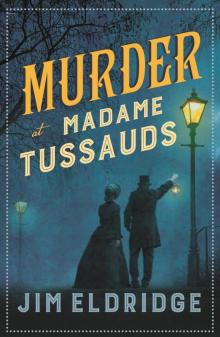 Murder at Madame Tussauds
Murder at Madame Tussauds Murder at the Manchester Museum
Murder at the Manchester Museum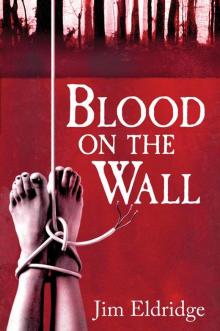 Blood On the Wall
Blood On the Wall 4.3.2.1
4.3.2.1 Jungle Kill (Black Ops)
Jungle Kill (Black Ops)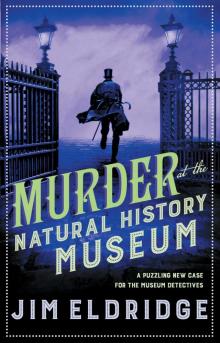 Murder at the Natural History Museum
Murder at the Natural History Museum Murder at the British Museum
Murder at the British Museum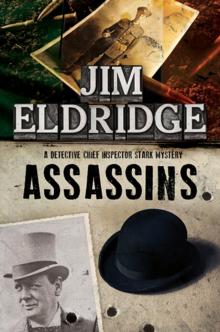 Assassins
Assassins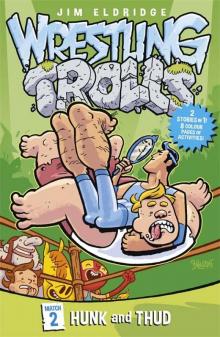 Hunk and Thud
Hunk and Thud Roman Invasion
Roman Invasion Big Rock and the Masked Avenger
Big Rock and the Masked Avenger The Last Enemy
The Last Enemy Urban Assassin
Urban Assassin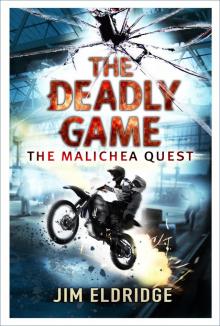 The Deadly Game
The Deadly Game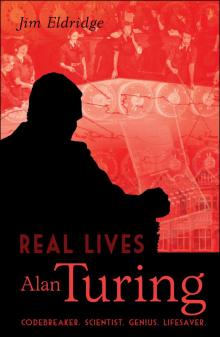 Alan Turing
Alan Turing The Lethal Target
The Lethal Target The Giant Rumble
The Giant Rumble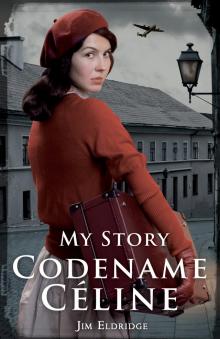 Codename Céline
Codename Céline Death in the Desert
Death in the Desert Escape from Pompeii
Escape from Pompeii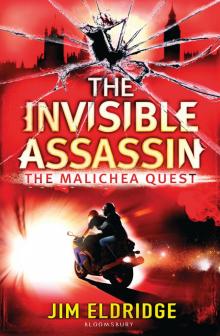 The Invisible Assassin
The Invisible Assassin Shadows of the Dead
Shadows of the Dead Jack Versus Veto
Jack Versus Veto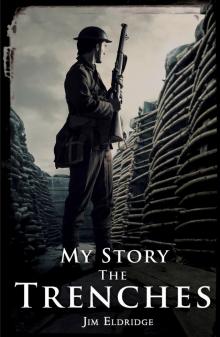 The Trenches
The Trenches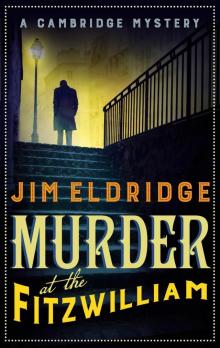 Murder at the Fitzwilliam
Murder at the Fitzwilliam Coming Home
Coming Home